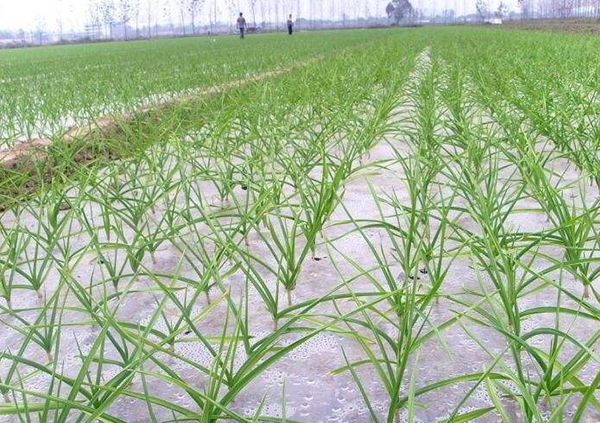
The environment is the people's livelihood, the mountains are the beautiful, and the blue sky is the happiness. President Xi Jinping pointed out that "we need not only green mountains, but also mountains of gold and silver. The green mountains are not only gold and silver, but also an important guarantee for the health of the people.
In order to realize industrialization, urbanization, informatization and agricultural modernization, China must take a new road of development. In economic development, we should clearly put the protection of ecological environment in a more prominent position. The optimization of ecological environment is the improvement of productivity, and the ecological environment is the basis for the smooth development of economy. "Circular economy is to utilize natural resources and environmental capacity according to the ecological law, develop economy on the basis of continuous material recycling, and realize the ecology of economic activities." Developing circular economy can maximize the use of natural resources, greatly improve the allocation rate of natural resources, minimize waste production and emissions, and thus reduce the damage of economic development to the ecological environment. Developing circular economy can realize "low emission" or "zero emission" of hazardous wastes, and form an ecological design scheme integrating cleaner production, comprehensive utilization and sustainable development of resources, so as to achieve low consumption, low pollution and high utilization of natural resources, achieve maximum economic benefits with minimum cost of resources and environment, and circular economy based on continuous material recycling is a necessary measure to realize the development of ecological economy.
While expanding the scale of production, the company actively responds to the national policy in environmental protection and strives to achieve material recycling and "zero discharge" of waste.
I. Fermentation Test Sites of Organic Fertilizer (Garlic Peel)
April-August is the peak season of dehydration workshop every year. During the processing, garlic peel will be produced in large quantities. As an organic waste, garlic peel will cause serious pollution to the environment if not handled properly.
Garlic peel is rich in allicin and potassium, which can be used as a nutritious for plants after fermentation. Organic fertilizer production generally has to go through compost fermentation process through the role of microorganisms under certain conditions, the organic matter is constantly degraded and stable, to produce a suitable product for land use. Most domestic organic fertilizer products only compost fermentation for 15-20 days, such products can only meet the harmless standards. The fermentation process of high quality organic fertilizer compost usually takes 45-60 days. In summer, the company concentrates garlic peel on 70 mu garlic base. By composting, which is a simple method of treating organic waste and making fertilizer, garlic peel is fermented into organic fertilizer. Before deep ploughing in autumn, the fermented organic fertilizer is directly used in the base, so that the waste can be reused, which not only protects the environment but also saves the cost.
Composting, an ancient and simple method for treating organic wastes and making fertilizers, has attracted much attention in various countries with the deepening of research and the improvement of methods, because it has good ecological significance and brings benefits to agricultural production.

II. Sewage Treatment Pond
Environmental protection and green production have become an important issue of common concern all over the world. As a country with extremely scarce water resources, the present situation of water environment in China is not optimistic. With the increasing contradiction of water resources shortage, sewage treatment has become the primary task of water pollution control.
With the strong support of the local government, in June 2018, the company invested more than 7 million yuan to build a 64-meter long and 21-meter wide sewage treatment pond. It can realize three-stage treatment of sewage. Modern sewage treatment technology can be divided into one-stage, two-stage and three-stage treatment according to the degree of treatment. The one-stage treatment mainly removes the suspended solid pollutants in the sewage. Most of the physical treatment methods can only fulfill the requirements of the one-stage treatment. After one-stage treatment, BOD can generally be removed by about 30%, which can not meet the discharge standards. The one-stage treatment belongs to the pretreatment of the two-stage treatment. Two-stage treatment mainly removes colloidal and dissolved organic pollutants (BOD, COD) from sewage, and the removal rate can reach more than 90%, so that the organic pollutants meet the discharge standards. Further treatment of refractory organic matter, nitrogen and phosphorus by three-stage treatment can lead to eutrophication of water soluble inorganic substances.
The company carries out sampling inspection every six hours, observes the change of water quality in real time, and sends it to the third party inspection organization regularly to ensure that the removal rates of CODcr, decolorization rate, SS and BOD5 of treated sewage reach 80-90%, 95%, 90% or more, 75-80% respectively, and meet the GB8978-1996 water discharge standards. The daily treatment of wastewater in sewage treatment pond can reach 400m³, which meets the needs of production and realizes zero discharge of wastewater.
The protection of ecological environment and economic development are mutually complementary, mutually restrictive and mutually reinforcing. Optimizing ecological environment is to develop productive forces. In the process of economic development, we should fully consider the maximum load of the ecological environment, establish a resource-saving and environment-friendly national economic system, and ultimately achieve the coordinated and sustainable development of the ecological economy.


